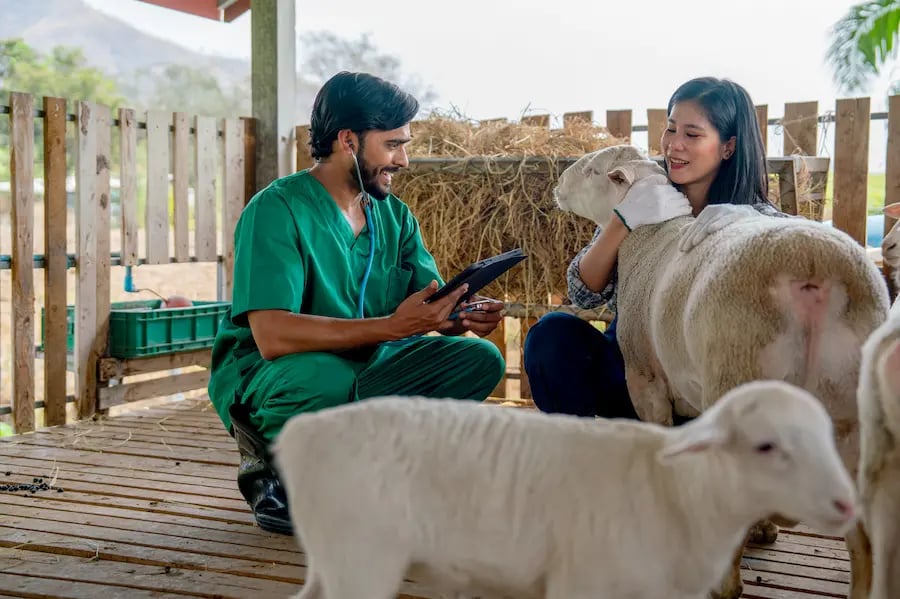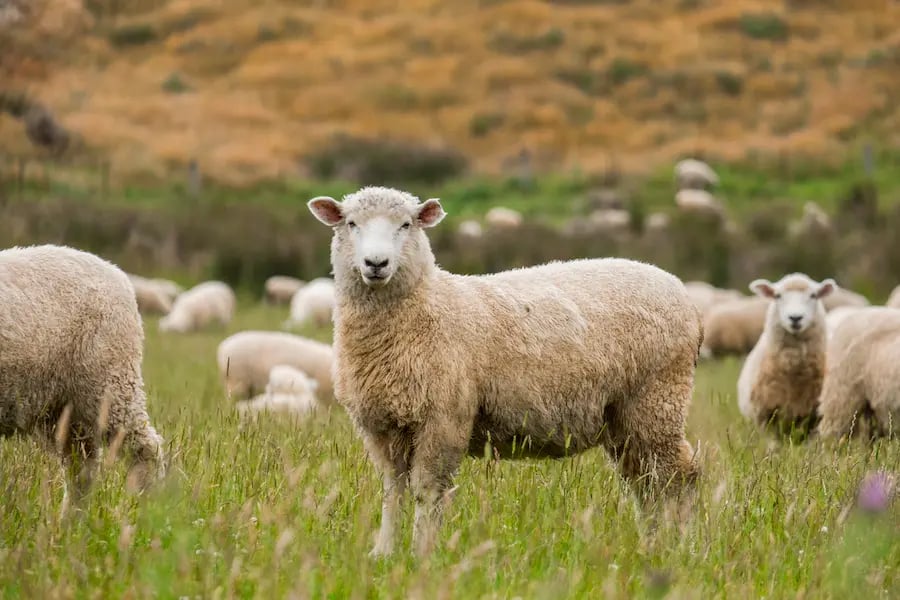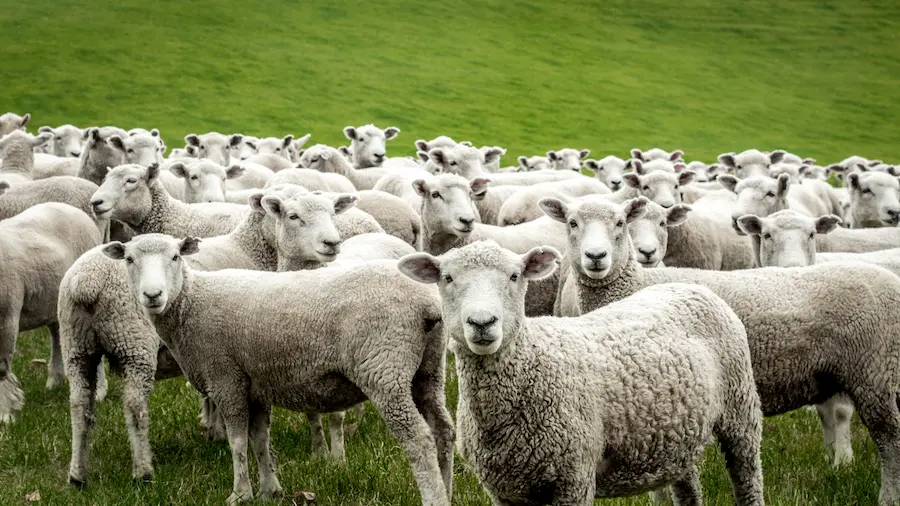Q fever is a zoonotic disease caused by a small intracellular bacterium: Coxiella burnetii. Many animal species, including mammals, birds, reptiles and even invertebrates, can be carriers of the disease. However, it is ruminants, and particularly domestic ruminants, that are the main source of contamination for humans, due to the proximity between these animals and human populations.
Prefer to listen to this article? Click the play button below and enjoy our podcast!
Among animal species, cattle, sheep and goats are also the most susceptible to the disease. In sheep, the clinical picture is dominated by the ASPW complex: Abortions, Stillbiths, Premature lambing, Weak offsprings.
An effective vaccine against Q fever in sheep
Controlling the disease in ruminants involves biosecurity measures and vaccination. Only one vaccine is available on the veterinary market. It is a phase I inactivated vaccine that is available since 2005. It was initially licensed for goats and cattle. Since 2023, it has also been authorized for sheep1 , following an experimental study (with a control group) which demonstrated its efficacy and safety in this species2.

Unvaccinated animals and vaccinated animals were challenged with a strain of Coxiella burnetii injected subcutaneously. The results showed that there were more surviving lambs in the vaccinated group than in the unvaccinated group (Table 1). Similarly, in the vaccinated group, there were more normal pregnancies (defined as the absence of the birth of at least one dead lamb and the survival to the end of the study of all the lambs in the same gestation) than in the unvaccinated group (Table 2).
|
Group |
Surviving lambs |
Dead lambs |
P value |
|
Vaccinated ewes (n=5) |
10 |
1 |
0.0489 (Cochran-Armitage Trend Test) |
|
Unvaccinated ewes (n=6) |
8 |
4 |
Table 1: Number of surviving and dead lambs after challenge
|
Group |
Normal pregnancy |
Abnormal pregnancy |
P value |
|
Vaccinated ewes (n=5) |
4 |
1 |
0.0178 (Cochran-Armitage Trend Test) |
|
Unvaccinated ewes (n=6) |
1 |
5 |
Table 2: Number of normal (all lambs born healthy and survived) and abnormal pregnancies after challenge
With regard to excretion of Coxiella burnetti in faeces, vaginal fluids and milk, two ewes in the vaccinated group temporarily shed the bacteria in vaginal fluids (one and three days after lambing) but none of the vaccinated ewes shed the bacteria in milk or faeces. In contrast, all unvaccinated ewes excreted the bacteria by at least one route after the challenge. Other field studies carried out on contaminated farms have also shown that vaccination reduced the number of ewes excreting and/or the quantity of bacteria excreted3–6.
A safe vaccine against Q fever in sheep
The experimental study2 mentioned above also assessed the safety of the vaccine. No local reactions were observed after the two primary injections. Only a slight increase in rectal temperature (+0.68°C) was noted in the vaccinated group compared with the unvaccinated group after the first injection. However, after the second injection, there was no significant difference between the groups. In other studies, including both pregnant and non-pregnant ewes, no adverse effects of the vaccines were observed7,8.

Vaccination protocol
Primary vaccination consists of two 2-mL doses injected subcutaneously, 3 weeks apart. For optimum efficacy, it is advisable to vaccinate all the animals in the flock, if possible before breeding. Young animals can receive the first dose from the age of 4 months.
In order to eradicate the disease from the herd, vaccination should be continued for a minimum of 5 years and ideally 10 years.
References
1. Coxevac (--) - Suspension for injection | UPD. https://medicines.health.europa.eu/veterinary/en/600000003433
2. Williams-Macdonald, S. E. et al. Efficacy of Phase I and Phase II Coxiella burnetii Bacterin Vaccines in a Pregnant Ewe Challenge Model. Vaccines 11, 511 (2023).
3. Eibach, R., Bothe, F., Runge, M. & Ganter, M. Long-term monitoring of a Coxiella burnetii-infected sheep flock after vaccination and antibiotic treatment under field conditions. Berliner und Munchener tierarztliche Wochenschrift 126, 3–9 (2013).
4. Astobiza, I. et al. Coxiella burnetii shedding and environmental contamination at lambing in two highly naturally-infected dairy sheep flocks after vaccination. Research in Veterinary Science 91, e58–e63 (2011).
5. Astobiza, I., Barandika, J. F., Juste, R. A., Hurtado, A. & García-Pérez, A. L. Evaluation of the efficacy of oxytetracycline treatment followed by vaccination against Q fever in a highly infected sheep flock. The Veterinary Journal 196, 81–85 (2013).
6. García-Pérez, A. L., Astobiza, I., Barandika, J. F., Juste, R. A. & Hurtado, A. Resultados de 3 años de vacunación frente a fiebre Q en 3 rebaños ovinos naturalmente infectados. in 347–351 (XXXVII Congreso Nacional de la Sociedad Española de Ovinotecnia y Caprinotecnia (SEOC), Ciudad Real, Spain, 2012).
7. Joulié, A. et al. Coxiella burnetii Circulation in a Naturally Infected Flock of Sheep: Individual Follow-Up of Antibodies in Serum and Milk. Appl Environ Microbiol 83, e00222-17 (2017).
8. Bauer, B. U. et al. Humoral immune response to Q fever vaccination of three sheep flocks naturally pre-infected with Coxiella burnetii. Vaccine 39, 1499–1507 (2021).
About the author
Philippe Gisbert (Ruminants Global Technical Manager)
Philippe Gisbert started his career in 1994 as a Vet practitioner working with companion and farm animals for over 9 years. He then became Health Affairs Manager for Group Agena (artificial insemination company). In 2008 he joined Eurofins – Laboratoire Coeur de France as Animal Health Unit Manager where he worked for 7 years until he joined Ceva France as Technical Manager Ruminants (Infectiology, Vaccines and Diagnostic). Since 2020 he is Global Technical Manager for Biologicals, Udder Health and Antiinflammatories. He is a member of SIMV diagnostic and anti-infective technical groups and has integrated different working groups of ANSES and UNCEIA related to epidemiology, antibiotic resistance and reproduction in livestock.
Explore author’s articles

Leave your comments here